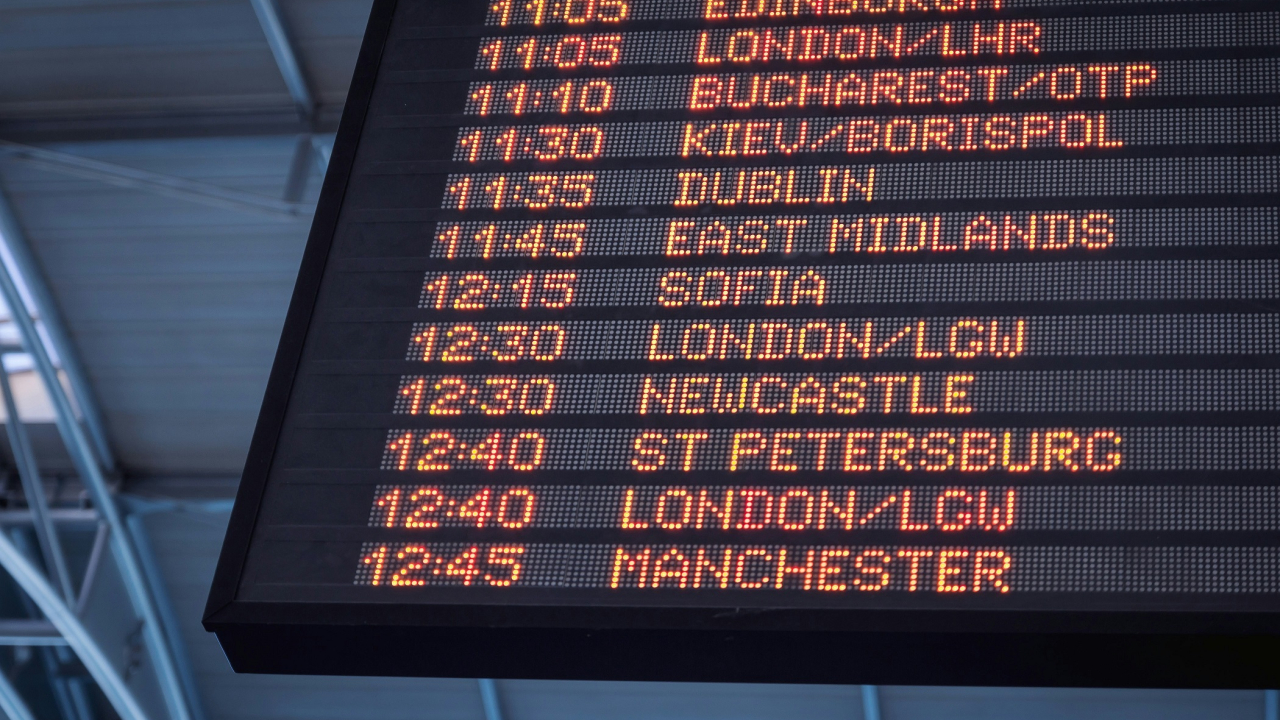Europe’s Airports are Still 5% Below Pre-pandemic Passenger Levels
Kevin Rozario
January 31, 2024

© Jeshoots.com / Unsplash
Europe is still playing catch-up to get to 2019 traffic numbers. According to the latest data from the airports association ACI Europe, the region’s gateways served 2.3 billion passengers in 2023, up by 19% over 2022. However, that is still 5.4% below pre-pandemic volumes.
It is however a mixed picture. While some airports achieved new traffic records, the large majority lagged behind their 2019 volumes. The increase was primarily driven by international passenger traffic (up 21%) which grew at almost twice the pace of domestic passenger traffic (up 11.7%), favoring the major hubs. However even the top gateways were hamstrung by weak Asian markets, the slow return of corporate travel, and tight capacity controls.
Overall, 57% of Europe’s airports remain below their pre-pandemic volumes.
Commenting on the top-line results, Olivier Jankovec, Director General of ACI Europe, said: “This was an impressive result considering the prevailing inflationary pressures and higher airfares as well as heightened geopolitical tensions. It is testament to the priority people give to travel over other forms of discretionary spending—and it speaks volumes about the value and importance of air connectivity.”
Airports in the EU+ market (which includes the European Union, European Economic Area, Switzerland, and the UK) also did better than the rest of Europe, but not by much (19% and 16% respectively). The latter category consists of eastern gateways in Albania, Armenia, Belarus, Bosnia & Herzegovina, Georgia, Israel, Kazakhstan, Kosovo, Northern Macedonia, Moldova, Montenegro, Russia, Serbia, Turkey, Ukraine, and Uzbekistan.

Some airport in Europe are wondering where all their passengers have gone.
© Michal Parzuchowski / Unsplash
Israel Sees Traffic Collapse
Beyond the headline results, ACI Europe noted that 2023 was marked by “unprecedented variations” in traffic performance among both national and individual airport markets when compared to pre-pandemic levels. This it said revealed an aviation market being reshaped by a mix of structural changes, demand resilience, and geopolitics.
For example, as a result of the war in Gaza, the passenger traffic recovery of airports in Israel went into reverse in the final quarter, pulling the annual figure down to stand at 12% below pre-pandemic. Q4 passenger traffic collapsed by 63%. Meanwhile in war-torn Ukraine airports remained shuttered and therefore 100% down on 2019.
But even in parts of the western continent that are more familiarly called Europe, there were wide variations. Within the EU+ markets, several exceeded 2019 levels comfortably: Portugal (+12.2%), Greece (+12.1%), Iceland (+6.9%), Malta (+6.7%), and Poland (+4.5%). Others were way nowhere near a full recovery: Finland (-29.6%), Slovenia (-26.2%), Germany (-22.4%) and Sweden (-21%).
Top Markets Struggle to Recover
Germany’s aviation under-performance may come as a shock but its economy has been blighted for some time and could bring down others with it. Among the largest EU+ markets, only airports in Spain have fully recovered (+3%). Italy is close behind (-2%), followed by France (-5.4%), and the UK (-6.4%).

Jankovec: “The big question marks will be about supply pressures and leisure demand resilience—with the latter unlikely to keep defying macroeconomics.”
© ACI Europe
Jankovec said: “Geopolitical conflicts have been a significant contributor to this multi-speed recovery – predominantly affecting airports in Ukraine, Israel, Finland as well as in other Eastern European countries. But the COVID19-induced structural changes in the aviation market are also having a major impact.
“These changes include the prominence of leisure, and VFR (visiting friends and relatives) demand as well as the emergence of ‘bleisure’ demand, along with ultra-low-cost carriers selectively expanding and full-service carriers retrenching on their hubs and driving consolidation. While these developments have generally benefited airports in markets relying on inward tourism, there is no doubt they have also resulted in increased competitive pressures for airports across the board.”
While ACI Europe sees the performance gaps narrowing in 2024, they will not be closing. Geopolitical tensions are also “part of our new reality,” said Jankovec. He added: “The big question marks will be about supply pressures and leisure demand resilience—with the latter unlikely to keep defying macroeconomics but becoming increasingly tied to them.”
For now, ACI Europe is keeping its guidance for a 7.2% increase in passenger traffic this year compared to 2023, which should bring the region 1.4% above pre-pandemic volumes by December.
